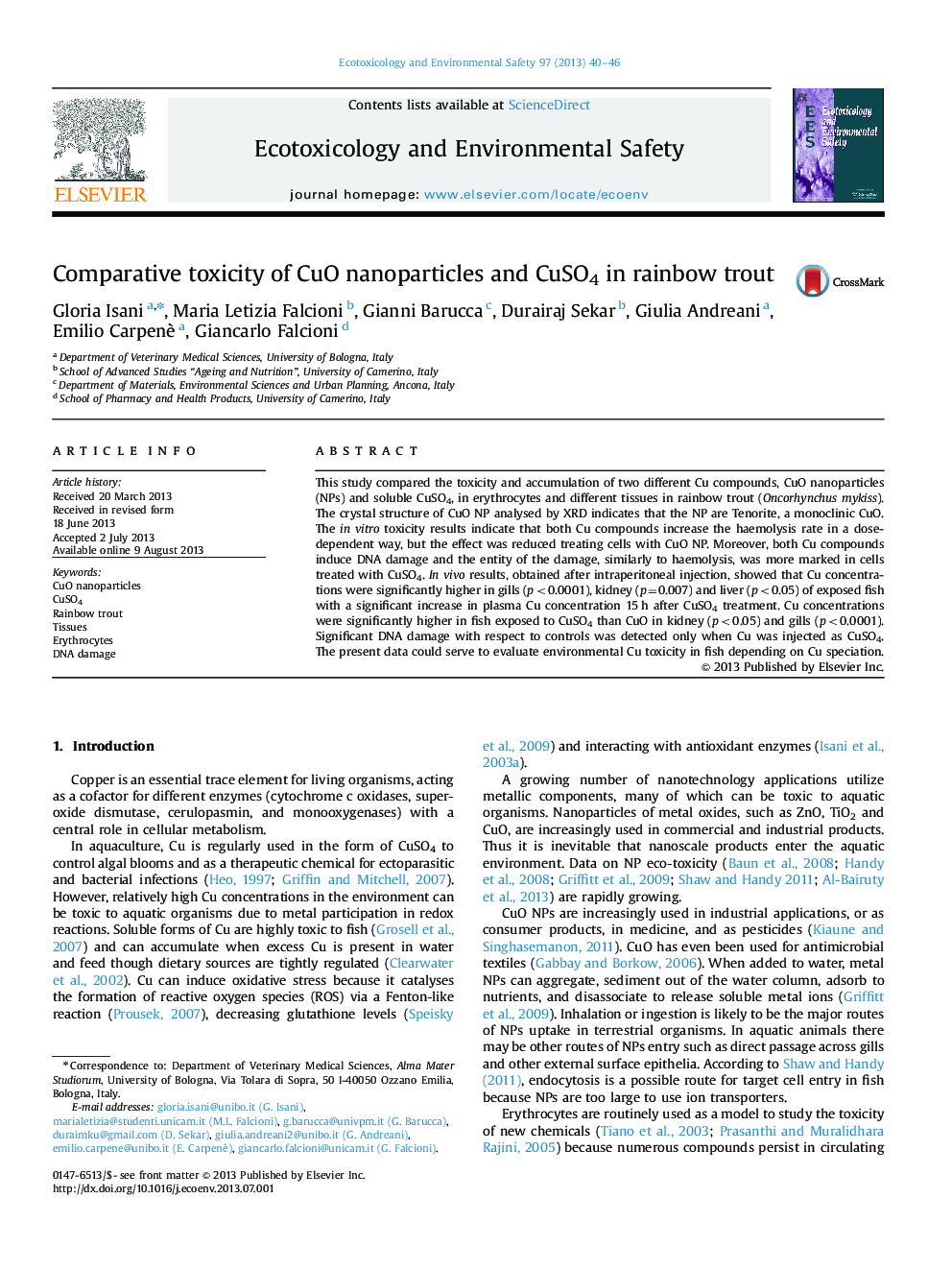| Article ID | Journal | Published Year | Pages | File Type |
|---|---|---|---|---|
| 4420299 | Ecotoxicology and Environmental Safety | 2013 | 7 Pages |
•CuSO4 induced higher in vitro haemolysis and DNA damage than CuO nanoparticles.•The damage induced by CuO is only in part due to the solubility of these nanoparticles.•Rainbow trout erythrocytes represent an outstanding model to study xenobiotic-induced damage.•In vivo experiment demonstrated that an impaired Cu homoeostasis occurred shortly after CuSO4 injection.•Rainbow trout is a useful animal model to compare in vitro and in vivo toxicity of Cu compounds.
This study compared the toxicity and accumulation of two different Cu compounds, CuO nanoparticles (NPs) and soluble CuSO4, in erythrocytes and different tissues in rainbow trout (Oncorhynchus mykiss). The crystal structure of CuO NP analysed by XRD indicates that the NP are Tenorite, a monoclinic CuO. The in vitro toxicity results indicate that both Cu compounds increase the haemolysis rate in a dose-dependent way, but the effect was reduced treating cells with CuO NP. Moreover, both Cu compounds induce DNA damage and the entity of the damage, similarly to haemolysis, was more marked in cells treated with CuSO4. In vivo results, obtained after intraperitoneal injection, showed that Cu concentrations were significantly higher in gills (p<0.0001), kidney (p=0.007) and liver (p<0.05) of exposed fish with a significant increase in plasma Cu concentration 15 h after CuSO4 treatment. Cu concentrations were significantly higher in fish exposed to CuSO4 than CuO in kidney (p<0.05) and gills (p<0.0001). Significant DNA damage with respect to controls was detected only when Cu was injected as CuSO4. The present data could serve to evaluate environmental Cu toxicity in fish depending on Cu speciation.
